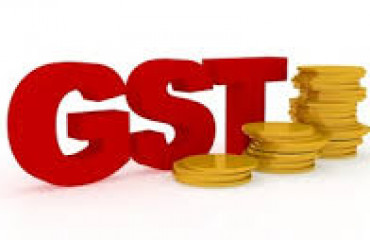
The Ministry of Finance has provided data on annual Goods and Services Tax (GST) collections and tax evasion cases in a response to an unstarred question in the Lok Sabha. The data shows that net Central GST collections have generally met or exceeded both Budget and Revised Estimates over the last five financial years.
The Ministry of Finance has provided data on annual Goods and Services Tax (GST) collections and tax evasion cases in a response to an unstarred question in the Lok Sabha. The data shows that net Central GST collections have generally met or exceeded both Budget and Revised Estimates over the last five financial years. For example, in the financial year 2023-24, the actual collection of Rs. 9,57,208 crores was slightly over the Rs. 9,56,600 crores estimated. The provisional data for 2024-25 shows collections at 96.7% of the estimates. These figures indicate a consistent trend in meeting fiscal targets, with minor fluctuations.
Over the same five-year period, the government detected a total of 91,370 GST evasion cases, with a total detection value of Rs. 7,07,942 crores. Of this amount, Rs. 1,29,175 crores was voluntarily deposited. A significant portion of these cases involved Input Tax Credit (ITC) fraud, with 44,938 cases detected and a total value of Rs. 1,78,541 crores. The number of both general GST evasion and ITC fraud cases has increased year-on-year, with the highest number of detections reported in 2024-25. This increase is accompanied by a higher detection value, though the voluntary deposits do not proportionally track the rise in detected amounts.
The government evaluates the effectiveness of compliance measures through various tools, including e-invoicing and GSTN analytics. These measures focus on automated risk assessment, identifying discrepancies, and generating intelligence reports on potential tax evasion. They use techniques like facial recognition and e-way bill data to identify fraudulent activities early. While these measures contribute to revenue collection and help in identifying tax evaders, the government states that it is not possible to isolate their specific impact. The overall revenue growth and reduction in evasion are also influenced by broader economic factors, such as global economic conditions, domestic consumption, and tax rates.
GOVERNMENT OF INDIA
MINISTRY OF FINANCE
DEPARTMENT OF REVENUE
LOK SABHA
UNSTARRED QUESTION NO. 2417
TO BE ANSWERED ON MONDAY, AUGUST 04, 2025/ SRAVANA 13,
1947(SAKA)
GST COLLECTION AND EVASION
2417. SHRI VE VAITHILINGAM:
Will the Minister of FINANCE be pleased to state:
(a) the annual GST collection targets during the last five years and the manner in which the actual collections has compared with these targets;
(b) the total number of GST evasion cases detected during the last five years along with the corresponding value of taxes recovered;
(c) the manner in which the Government evaluates the effectiveness of measures such as e-invoicing and GSTN analytics in identifying systemic gaps, improving compliance and preventing recurring tax evasion; and
(d) the impact of these measures on revenue collection and addressing gaps in the system?
ANSWER
MINISTER OF STATE IN THE MINISTRY OF FINANCE
(SHRI PANKAJ CHAUDHARY)
(a) The actual revenue collection w.r.to Net Central GST compared to the Budget / Revised Estimates during the last five financial years are as follows:
Net Central GST Collection
(CGST + IGST (residual) + GST Compensation Cess)
Amount in Rs. Crores
Source: Receipt Budget of respective years;
FY 2024-25 actual collection have been taken from PrCCA (CBIC); [P]= Provisional;
(b) The total number of GST evasion cases detected by Central Government formations, during last five years along with the corresponding value of taxes recovered are as follows:
–
Source: GST Investigation Wing;
Note: Total GST evasion data includes ITC fraud cases.
(c) & (d) There are various steps / measures taken by Central Government & GSTN to help in improving compliance and preventing tax evasion such as digitization through E-invoicing, GST analytics such as automated risk assessment based on compliance attributes of taxpayer, highlighting of outliers based on system-flagged mismatches, providing actionable intelligence with an aim to manage GST revenue risks through various tools, generating inputs regarding GST non-compliances or evasion on the basis of identifying anomalies in taxpayer behaviour (such as potential tax evasion, fraudulent registration, and suspicious e-way bill activity etc.) and selection of returns for scrutiny and selection of taxpayers for audit based on various risk parameters. These measures are helpful in safeguarding the revenue and nabbing the evaders. Certain projects were also undertaken such as "Project Anveshan" (Analytics, Verification, Shortlisting of Anomalies) whereby newer techniques like Facial Recognition System (FRS), E-way bill data etc. were used for early identification of GSTINs with propensity for fake/ fraudulent activity to generate Intelligence reports.
While the above measures contribute to revenue collection, impact of such measures in identifying systemic gaps, improving compliance and preventing recurring tax evasion is not ascertainable.
The outcomes such as revenue growth and reduction in instances of tax evasion cannot be attributed solely to all or any individual such measure, as various other factors such as global economic conditions, economic growth in the country, level of domestic consumption of goods & services, tax rate etc. are also relevant for this.
